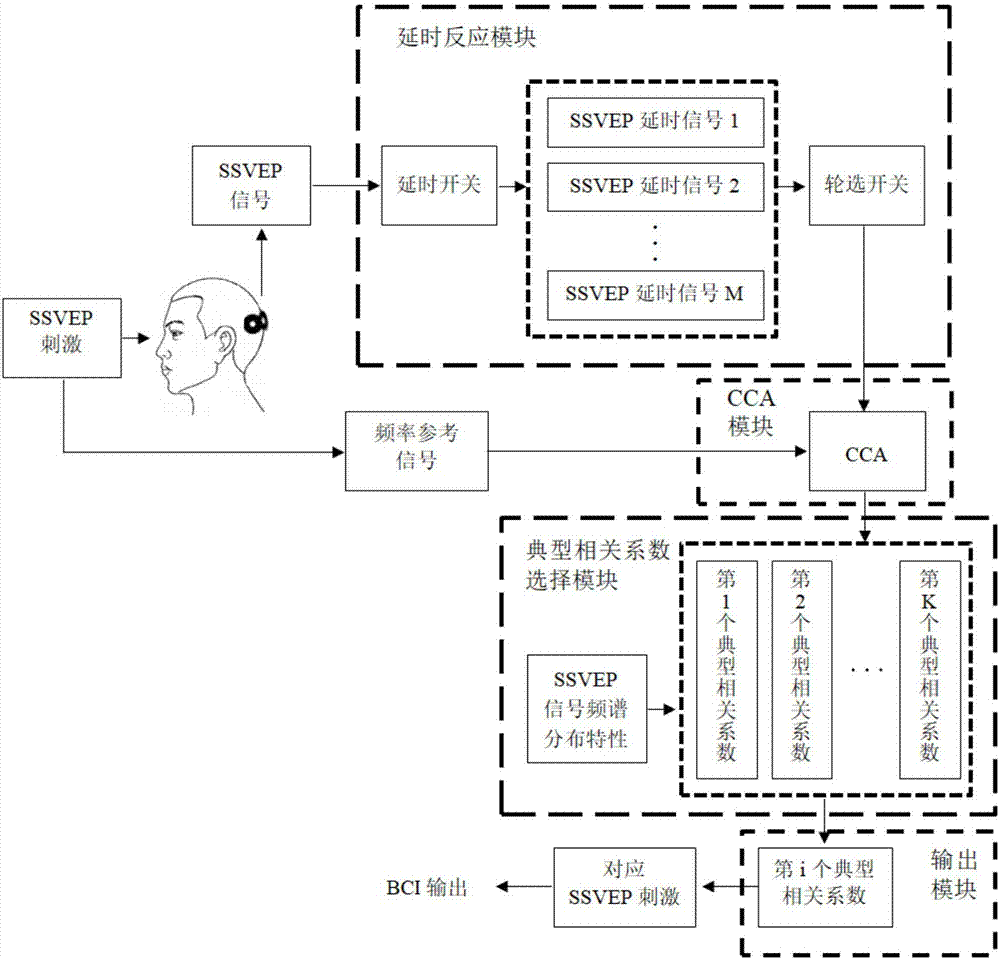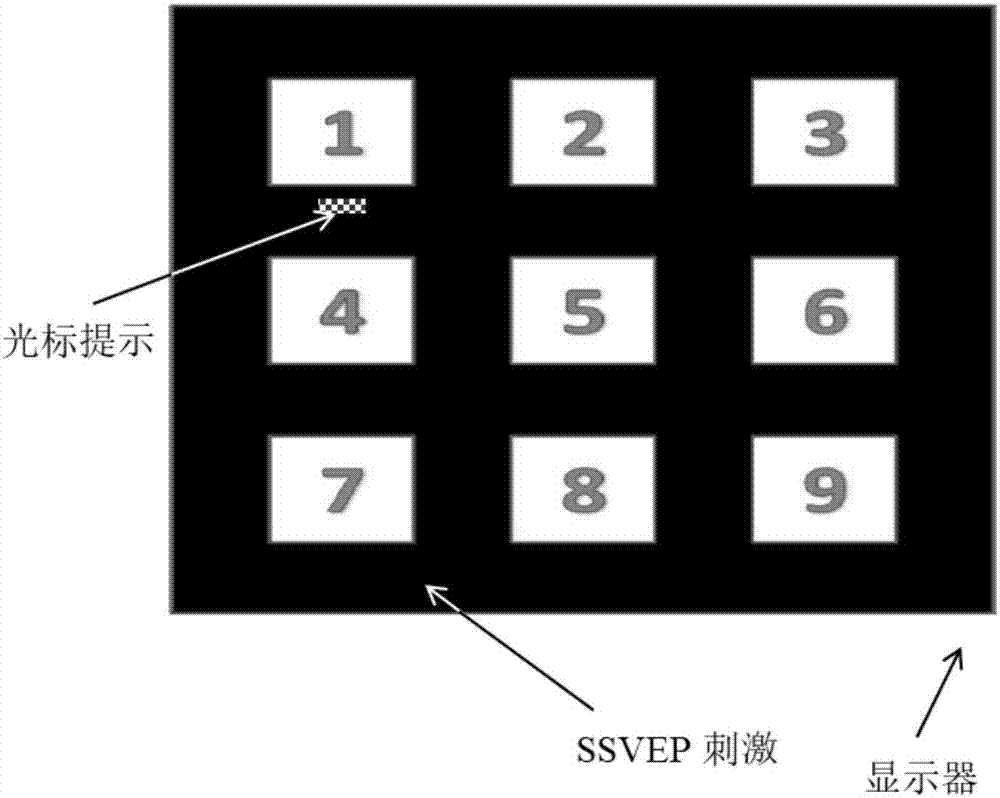Brain-computer interface system based on steady-state visual evoked potential physiological characteristics
A technology of steady-state visual induction and brain-computer interface, which is applied in the fields of electrical digital data processing, input/output process of data processing, computer components, etc. problems, to achieve the effect of improving the classification accuracy and improving the analysis ability
- Summary
- Abstract
- Description
- Claims
- Application Information
AI Technical Summary
Problems solved by technology
Method used
Image
Examples
Embodiment Construction
[0027] The technical solution of the invention will be described in detail below in conjunction with the accompanying drawings.
[0028] Aiming at the defect that the existing SSVEP-type BCI system does not fully consider the physiological characteristics of SSVEP signals, the present invention proposes a brain-computer interface that analyzes the correlation between SSVEP signals and frequency reference signals under the constraints of the steady-state visual evoked potential spectrum distribution characteristics system.
[0029] The brain-computer interface system based on the physiological characteristics of steady-state visual evoked potential involved in this application is as follows: figure 1 As shown, it includes: a delayed response module, a CCA module, a typical correlation coefficient selection module, and an output module. The delayed response module is used to delay processing the collected steady-state visual evoked potential signal, and the CCA module is used t...
PUM
 Login to View More
Login to View More Abstract
Description
Claims
Application Information
 Login to View More
Login to View More - R&D
- Intellectual Property
- Life Sciences
- Materials
- Tech Scout
- Unparalleled Data Quality
- Higher Quality Content
- 60% Fewer Hallucinations
Browse by: Latest US Patents, China's latest patents, Technical Efficacy Thesaurus, Application Domain, Technology Topic, Popular Technical Reports.
© 2025 PatSnap. All rights reserved.Legal|Privacy policy|Modern Slavery Act Transparency Statement|Sitemap|About US| Contact US: help@patsnap.com



